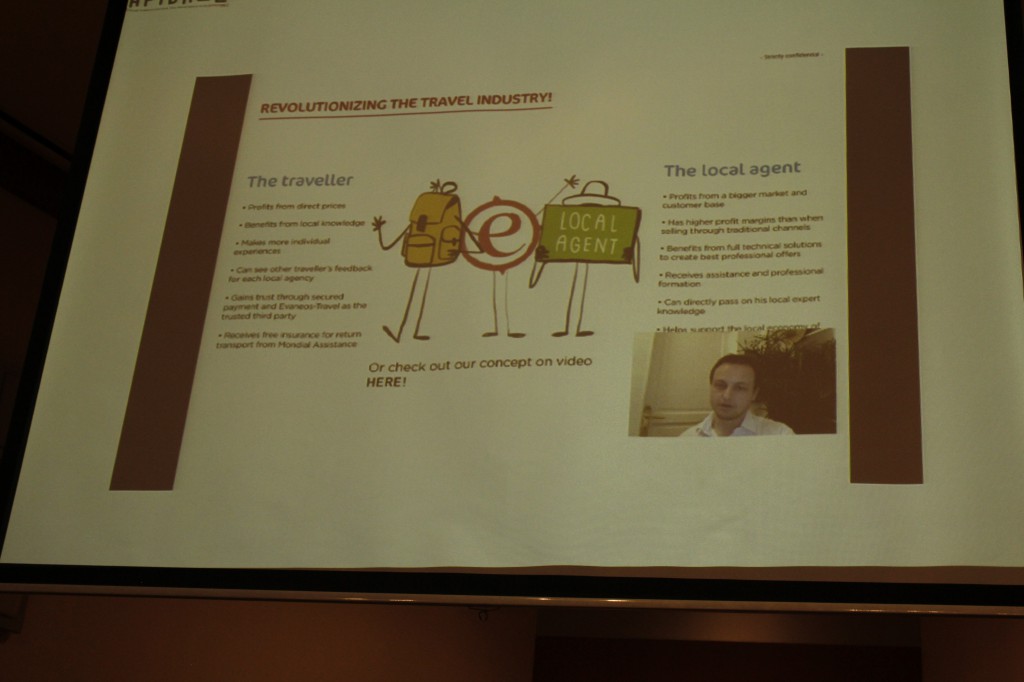 Day One wrapped up with excellent presentations showing more case studies on service innovation success, with a particular focus on WebRTC. Though for balance I included APEX Communications who, though quiet from a marketing perspective, have an impressive roster of customers and great case studies using a more traditional platform based approach. This is the fourth weblog reviewing TADSummit, and this wraps up Day One, we still have Day Two to go! Other weblogs in this series include: Keynotes, Morning Plenary and Day One Work Streams.
Day One wrapped up with excellent presentations showing more case studies on service innovation success, with a particular focus on WebRTC. Though for balance I included APEX Communications who, though quiet from a marketing perspective, have an impressive roster of customers and great case studies using a more traditional platform based approach. This is the fourth weblog reviewing TADSummit, and this wraps up Day One, we still have Day Two to go! Other weblogs in this series include: Keynotes, Morning Plenary and Day One Work Streams.
Doug Tait, Director Telecoms Markets, Oracle presented on the “The Business Intelligence Challenge.” Unfortunately Sebastian Grabowski, R&D Center Director, Orange had a passport issue (it had expired) so could not make it. Doug gave a nice presentation on the WebRTC chasm from technology to implementation, and the aspects missing to make it mass-market such as security, reliability and interoperability. Doug also highlighted the importance of developer events in building awareness and momentum around WebRTC such as bihapi.pl and TADHack.
Kent Winter, Vice President at APEX Communications presented on “Enterprise Self-Service Solutions for the Mobile Cloud.” APEX Communications is one of those ‘quiet but everywhere’ companies. Their OmniVox3D Application Server is installed in 100+ Countries though 60+ VARs (Value Add Resellers). They are in 250 service providers and have been in business for 25 years. They focus on delivering platforms for telcos and their local SI partners to innovate upon. At TADSummit they were promoting APEX Access, a Cloud PBX / IPCentrix Solution telcos can deploy on top of their existing SIP Network or IN infrastructure.
MTN Nigeria was a case study for Apex Access with a network auto-attendant that enables small businesses to appear larger and enable employees while in the field to work more effectively with the office. The platform was designed and deployed in 2 months running on Ericsson’s IN with SIP. It was integrated with Ericsson VPN & MTN web provisioning. Within 6 months there wwew 1000 Enterprises using the platform. While we focus on the ‘bright and shiny’ new technology its important to realize the billions of people that need basic services we often take for granted.
Juan Mateu, previously CEO of Solaiemes and now since the acquisition Engineering Director at Comverse presented on “WebRTC is for Telcos too. Today!” The big change is Juan’s slides looked slick compared to the usual “engineer asked to create some slides” – the advantages of a dedicated marketing department 😉 Juan elloquently presented what the WebRTC opportunity means for telcos:
- Making ubiquitous, browse accessible legacy telco services as Voice and powering Unified Communications combining Voice, RCS messaging/video and WebRTC.
- Enable a myriad of new services “solving problems” users and business have. Combine “reachability & privacy”. Telcos are in the best position to do that. Those services can be provided by 3rd parties using API/SDK. ENGAGING THE ECOSYSTEM.
And pointed out the importance of NOT taking the expensive time wasting IMS approach – it can be done today using a WebRTC-Telco UNI Gateway architecture. He then went on to show a range of WebRTC demos.
We finished the long day with a case study on a “WebRTC Powered Travel Agency” presented by Yvan Wibaux Co-Founder & CTO Evaneos (Apidaze customer) and Luis Quina Borges Co-founder & COO Apidaze. Yvan gave a great presentation and demonstration of how they use Apidaze and integrate it into their service. It was a simple yet impressive demonstration of the power of communications to revolutionize the travel business – Yvan’s words not mine. It was the perfect way to wrap up the day, and showed that if telcos do not sort out their go-to-market strategy as discussed in the work streams, entrepreneurs will simply work around them and make business happen.
